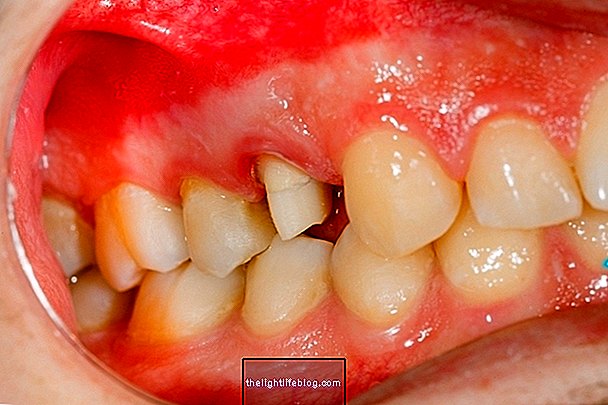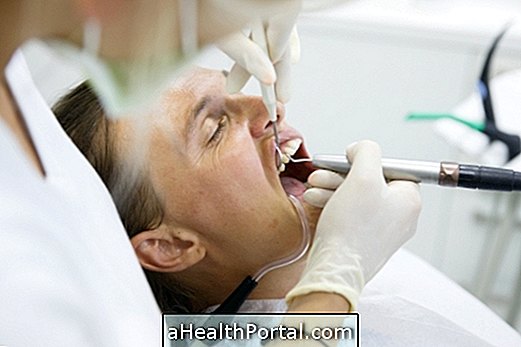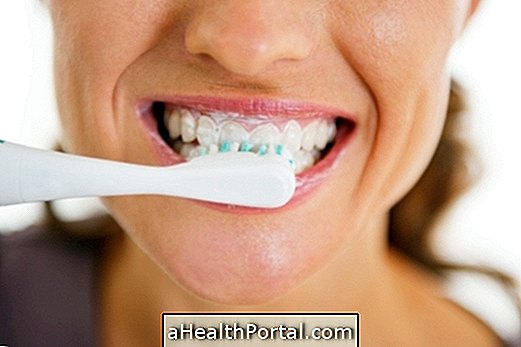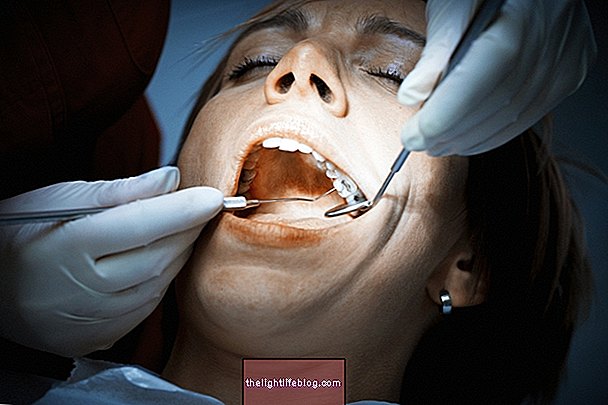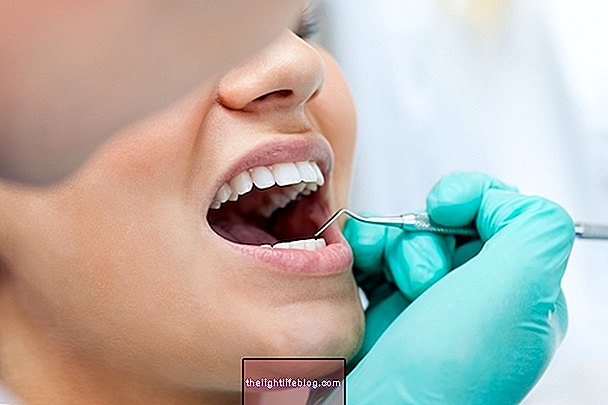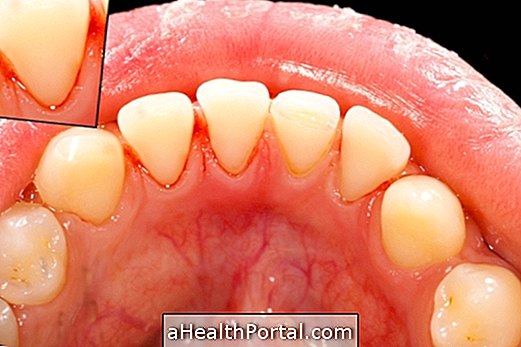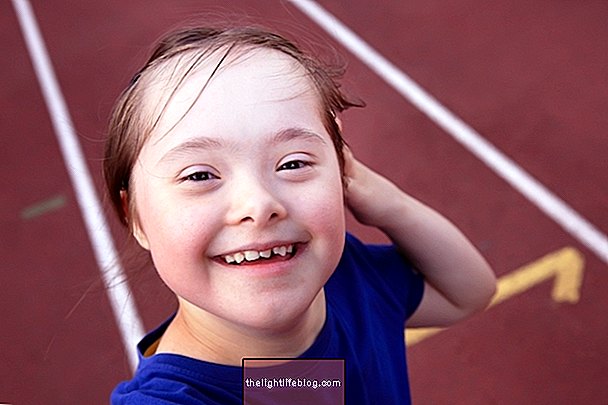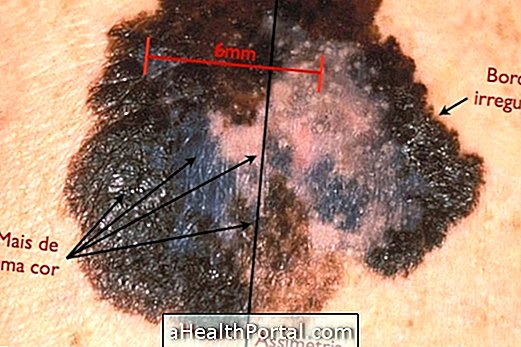A cross bite is a misalignment of the teeth that causes, when the mouth is closed, one or more teeth of the upper jaw not to align with the lower ones, getting closer to the cheek or tongue, and leaving the smile crooked.
There are two main types of crossbite:
- Posterior: it is when the upper and rear teeth close inside the lower teeth;
- Anterior: it is when the upper front teeth close behind the lower teeth.
In addition to the aesthetic problem, the cross bite can also have other negative effects such as increased risk of cavities and gum disease that happen, mainly, due to the greater difficulty in brushing your teeth correctly.

The crossbite usually appears soon during childhood, but it does not disappear on its own, being necessary to do the treatment with the use of braces, surgery, or removal of teeth, for example. Thus, if this alteration is suspected, even in children, it is important to see a dentist to confirm the diagnosis and start treatment.
Main forms of treatment
Ideally, treatment for the crossbite should be started during childhood or adolescence, when the definitive teeth are still growing. However, there are several forms of treatment, which can also be used in adults:
1. Use of a palate expander
The palate expander is a device that is attached to the roof of the mouth, between the molars, and widens it, pushing the teeth outward. In order for it to work correctly, regular visits to the dentist are necessary to gradually increase the size.
This method works best in children, as the roof of the mouth is still developing, and it is possible to better control its size, however, it can also be used in some adults.
2. Removal of teeth
This technique is more used in cases where the bite is altered due to the influence of the lower teeth. This is because after removing one or more teeth, the dentist creates enough space for the teeth to grow properly, without affecting alignment.

3. Use of dental braces
This is one of the most used forms of treatment, especially during adolescence and adulthood, as it helps to pull the teeth into the correct place and align them. For this, a device is applied over the teeth that make constant pressure to "pull" or "push" the teeth, aligning the bite.
Depending on the degree of alteration of the bite and age, this type of device can be used from a few months to several years, varying widely from person to person.
Watch the following video and learn more about dental appliances:

4. Surgery
Surgery is the best treatment for adults with a cross bite, because, although it is a more invasive technique, it produces the results with better aesthetics. To perform this type of surgery, the surgeon breaks the jaw in several parts and then uses small screws and dental devices to replace them in the correct place.
How to prevent cavities during treatment
Since most treatments for crossbite use some type of appliance fixed on the teeth it is very important to maintain adequate oral hygiene, to prevent the appearance of cavities and even gum disease.
For this, it is advisable to wash your teeth thoroughly, especially close to the places where the appliance attaches to the tooth, as well as flossing between the teeth. In addition, you should also avoid eating foods that are too sweet or that stick easily to your teeth, as they can leave residues that are more difficult to eliminate and that facilitate the growth of bacteria.
Check out how to properly brush your teeth, even when using a dental braces.

Possible causes for crossbite
There are 3 main types of causes for crossbite, which include:
- Hereditary factors: this happens when there is genetics to have the jaw bone wider than the upper one, causing the teeth to become misaligned;
- Delay in the growth of teeth: causes the upper and lower teeth to grow at different times, which may cause them to be further apart;
- Sucking on the finger: this activity can cause the roof of the mouth to develop less, becoming smaller than normal and misaligning the teeth;
In addition, when there is an anatomical problem in the nose or throat, such as enlarged tonsils, for example, the child may start breathing through the mouth and, when this happens, the tongue is constantly raised and resting on the roof of the mouth, which can harm the development of the jaw, causing misalignment of the teeth.
What are the possible complications
When the proper treatment for the crossbite is not done, there may be several complications, which vary according to the degree of alteration of the dental alignment:
- Excessive wear of teeth and gums;
- Frequent accidental bites of the cheeks;
- Increased risk of cavities and gum disease;
- Pain in the neck and shoulders;
In some cases, the cross bite can even cause the appearance of frequent headache, which happens especially due to the constant contraction of the jaw muscle, which can also be known as bruxism, and which ends up becoming very tense and painful, radiating the pain to the head. Learn more about bruxism and how to relieve it.
Was this information helpful?
Yes No
Your opinion is important! Write here how we can improve our text:
Any questions? Click here to be answered.
Email in which you want to receive a reply:
Check the confirmation email we sent you.
Your name:
Reason for visit:
--- Choose your reason --- DiseaseLive betterHelp another personGain knowledge
Are you a health professional?
NoMedicalPharmaceuticalsNurseNutritionistBiomedicalPhysiotherapistBeauticianOther

